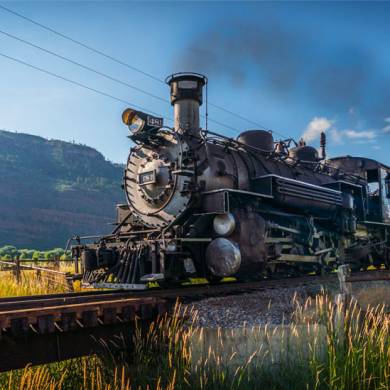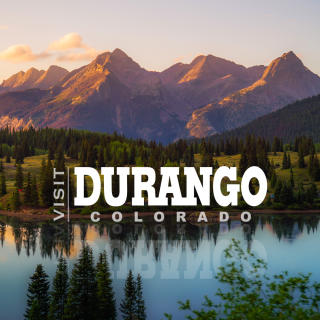Avalanche Safety
Around Durango
Avalanche safety is no joke. The San Juan Mountains are notorious for unstable snow and avalanches. It is imperative to receive proper training before heading into the backcountry and practice full burial scenarios frequently. Skiing, snowboarding, snowmobiling, and snowshoeing in the backcountry come with risks.
However, these can be some of the most enjoyable and rewarding winter activities if done with the proper knowledge, gear, and skills!
Avalanche Gear
Basic avalanche gear consists of an avalanche transceiver, shovel, and probe. Many people also choose to wear an airbag. Make sure to get your gear from a reputable company like Backcountry Access, Black Diamond, Ortovox, or Mammut and learn how to use it properly.
Avalanche Transceiver a.ka. Beacon
A beacon is a device that is worn on the body that is slightly bigger than a cell phone. Beacons send and receive electronic signals which indicate where a person is buried underneath the snow.
Shovel
A proper avalanche shovel should be made of metal like aluminum, which is very strong so that it will not break. Avalanche shovels are lightweight and break down for easy packing. You should plan on doing a lot of shoveling, so make sure to purchase a shovel that feels comfortable in your hands.
Probe
Probes are long metal poles that collapse into many shorter pieces like a tent pole that can be rapidly deployed. They are probed into the snow in a systematic pattern until there is a direct hit of the victim. After a direct hit, you and the rest of your party can start shoveling.
Airbag
An airbag will help you float on top of sliding snow and decrease the chance of a full burial. Airbags are stored in a specific backpack and have a ripcord near the shoulder for rapid inflation.
Avalanche Training and Courses
Avalanche training from an accredited program is a must for everyone venturing out into the backcountry. The AIARE 1 - Introduction to Avalanche Management - course is designed for anybody planning to travel in avalanche terrain, not just skiers and snowboarders. The course is 24 hours, spread over 3 days. This course covers developing a plan for travel, basic snow science, how to identify avalanche terrain, a systematic framework for decision making, group dynamics, and efficient companion rescue.
San Juan Expeditions offers AIARE 1 courses throughout the winter.
Know Before You Go: Check the Weather Conditions
Always check the avalanche hazard conditions with CAIC, the Colorado Avalanche Information Center, before heading out into the backcountry. Avalanche conditions can change daily and throughout the day. Also be sure to check the weather for snow, storm warnings, and temperature forecasts.
Plan Your Route
Use a topographic map to draw out your route and assess slope angles of where you will be traveling. Avalanches are possible on any slope 30 degrees or greater. This is a good time to identify suspected hazardous areas and find safe stopping points. Remember that you can still have fun in low-angle terrain, places with a slope of less than 30 degrees.
Stay Out of Harm's Way
The best way to stay out of harm's way is to stay home when the avalanche danger forecast is considerable or higher. When you are out in the backcountry, choose to travel uphill in areas with the least possibility of sliding or along a ridge. Ski or snowboard one at a time and don't stop or convene in a potential avalanche path or run out area. Only venture into the backcountry with people you trust to make conservative decisions and who have the proper training.
Conclusion
The San Juan Mountains and the Durango area are a huge winter playground with some of the best views and epic powder-filled slopes. Learning about avalanche safety can feel scary at first, but with the right knowledge, the right group, and the right snow conditions, winter recreation in the backcountry will make memories that last a lifetime.
Resources
KBYG - Know Before You Go - www.kybg.org
-
A free avalanche awareness program with captivating videos depicting the reality of avalanche danger
CAIC - Colorado Avalanche Information Center - www.avalanche.state.co.us
-
Provides avalanche forecasts for the San Juans and Colorado
AIARE - American Institute for Avalanche Research Education - www.avtraining.org
-
Provides educational courses for recreational and professional backcountry users based on the latest knowledge and research



